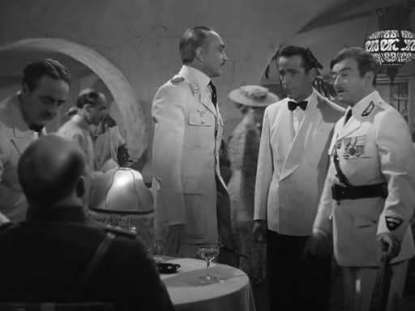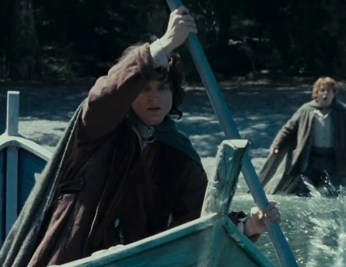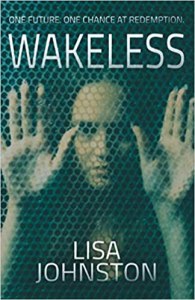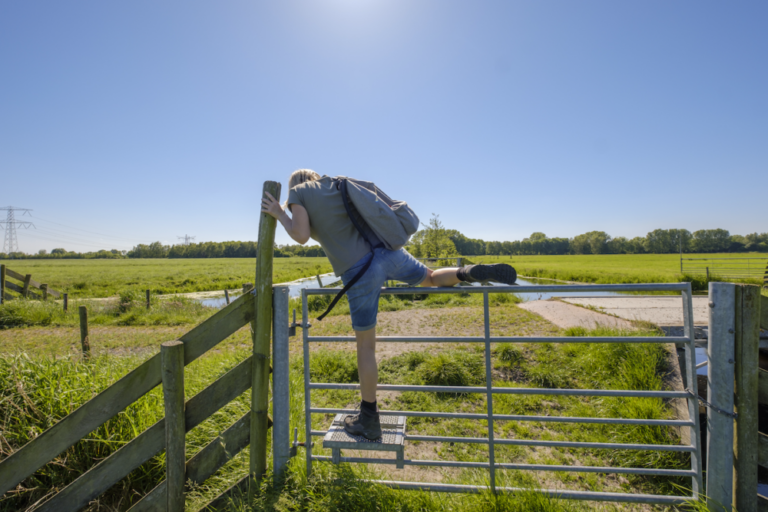 Beyond mere backdrop, story settings are what allow authors to orchestrate meaningful connections among characters. Settings should serve as more than just scenery. They should provide characters with compelling reasons to share the stage with one another. Accomplishing this in a story requires understanding how to strategically choose story settings as meeting grounds that amplify character interactions and deepen the resonance of the narrative.
Beyond mere backdrop, story settings are what allow authors to orchestrate meaningful connections among characters. Settings should serve as more than just scenery. They should provide characters with compelling reasons to share the stage with one another. Accomplishing this in a story requires understanding how to strategically choose story settings as meeting grounds that amplify character interactions and deepen the resonance of the narrative.
When writers choose story settings, they don’t always think about why they are choosing specific settings. You might choose a particular setting for a number of reasons:
- It seems like the most obvious or convenient choice to facilitate a scene’s plot events (e.g., a diner as a place to meet locals).
- It’s an interesting or unique locale that seems fun to explore (e.g., a space station).
- It seems symbolically resonant to the scene’s thematic content (e.g., a graveyard).
Sometimes settings come pre-packaged with certain genres (e.g., expansive worlds in fantasy or the halls of Congress or the White House in political dramas) or certain tropes (e.g., high schools in YA romances or famous world landmarks in international spy thrillers). Sometimes the setting will be the entire point of the premise (e.g., a burning skyscraper in The Towering Inferno or a Russian sub in The Hunt for Red October). Other times, settings are retrofitted into a story based on the needs of the plot (e.g., a claustrophobic setting is required for a climactic encounter between protagonist and antagonist).

The Hunt for Red October (1990), Paramount Pictures.
Although these are legitimate factors, none get at the heart of one of the most important metrics for how to choose story settings. That metric is simply: figuring out which settings will facilitate plot events that keep readers riveted.
At first glance, authors might be tempted to think the best way to rivet readers with setting is simply to choose something flashy and unique. But here’s the thing: flashy and unique settings won’t matter to readers at all if those same settings don’t give them what they’re really here for. And what is that? Simply, they came for the story. They came for the characters and for how those characters act when put in certain situations (aka, the plot).
But, again, let’s drill deeper. After all, you can have characters doing all kinds of plot stuff on the page—running around in exciting settings, exploring, seeing new things, shooting it out with the bad guy, falling in love, all of it—and still not satisfy readers. Story (as opposed to a string of scenes) is a development of character. Setting needs to facilitate that—either by becoming a catalytic “character in its own right” or by creating situations that bring other characters together.
In short, one of the key considerations for how to choose story settings is whether these settings will promote important dynamics between characters.
The General Rule of Thumb for How to Choose Story Settings
Ultimately, my top metric for how to choose story settings is simply logistics. Every time you maneuver characters into a setting, you need to ask how it will affect their proximity to other important characters. Closer isn’t always better (as we’ll explore in the next section), but generally speaking, if your most interesting characters are not sharing space for most of the story, you are wasting serious entertainment opportunities.
I have read and watched so many stories that were legitimately great in all other respects, but which failed to entertain, sometimes for chapters or episodes on end, because the author’s choice to separate characters into different settings killed the chemistry and all the good stuff that goes with it. This includes opportunities for dialogue, relational conflict, and the integral plot development created by the mutuality of characters’ cause and effect upon one another.
This post was inspired after I started the second season of Amazon’s steampunk fantasy Carnival Row. Although it struggled a bit after the antag reveal toward the end, Season 1 was a delight—a rare fantasy show that not only developed a unique and cohesive world but kept its plot tightly focused on its primary characters. In it, the primary setting of the Dickensian slum Carnival Row creates a milieu that keeps crossing the paths of ill-fated lovers Philo, a human detective, and Vignette, a “pix” freedom fighter and refugee. Not only does this setup allow the characters’ individual plotlines to become more and more intertwined, it also ensures that the bulk of their scenes offer viewers juicy interpersonal conflict and development—which, in turn, translates to higher stakes in the exterior plot.

Carnival Row (2019-23), Amazon Studios.
Season 2, unfortunately, immediately compromised itself by separating its two main characters. Although they now live together, the plot is engineered to put the characters in separate settings from the beginning. This was clearly designed with the idea that the next phase of the characters’ interpersonal development would be confronting their opposing goals and methods for saving Carnival Row. On its surface, this does not seem like a bad plan for the plot. But the practical outcome is that the primary dynamic that worked so well in the first season is utterly upended in the second. As a result, the relationship simply isn’t as interesting as it was in the first season. Thus the stakes aren’t as engaging, the individual plotlines fall comparatively flat, and the supporting characters who are amped up to try to remedy this can’t save the show.

Carnival Row (2019-23), Amazon Studios.
When choosing settings (and plot events, for that matter), it is so important to look beyond the top layer of what seems eye-catching or obvious. Instead, dig down to the actual effect these choices will have on the entire story. Are you choosing settings that bring your characters together—or that force them apart? Are you choosing settings that create and enhance your story’s most entertaining dynamics—or settings that generate scenes readers may, in fact, end up skimming or skipping?
We don’t always think of setting when questioning these aspects of our stories, but we should. Setting can offer tremendous clues into how the story may or may not be developing its tightest and most engaging possibilities.
The Logistics of How to Choose Story Settings
Really, all you need to know about how to choose story settings that enhance your plot’s possibilities is that you want settings that create the cauldron into which all of your story’s best individual elements can be alchemized into an intriguing whole.
To go deeper with this, explore the underlying purpose of any setting in your story. On the surface, the purpose of a setting might seem to be something along the lines of “where the first murder victim is discovered” or “where the protagonist finds the shocking letter from her dead ex” or “the gas station where the characters are robbed.” Deeper down, each of these scenarios creates a specific impact upon the characters and the evolution of their respective positioning in the story related to all other characters. These logistics create dynamics, and dynamics create gripping fiction.
Today, let’s examine four types of setting. It’s interesting (although certainly not necessary) to recognize that each of these setting types is, in fact, inherent to the four sections of story structure (as represented by the Normal World, the Adventure World, the Underworld, and the New Normal World). This doesn’t mean each of the following setting types needs to be used in order or exclusively in alignment with the four sections of story structure. Indeed, you will probably mix and match multiple iterations of these setting types throughout your story. But recognizing the association of these primary archetypes with the larger pattern of story can further underline how each one functions within the mechanics of your plot.
1. Settings That Are Meeting Grounds
Any setting that falls into this category is a powerhouse of opportunity for your story. Meeting Grounds are settings designed to bring characters together. This may be for an initial meeting, but it can also create a dynamic that brings characters together over and over again, allowing the relationship to evolve and develop with each new meeting.
The more Meeting Ground settings you incorporate into your story (or the more use you’re able to make of a single Meeting Ground), the more opportunity your story will have for scenes in which interesting characters are forced to come together. Meeting Grounds offer an inherent sense of movement. They are not static spaces, in which characters rest together, but spaces in which they are always coming and going.
Job places are an obvious example, as are schools, in which characters have no choice but to see each other every day. Other types of Meeting Places can be restaurants or bars.
For Example: Casablanca‘s entire setting is one big Meeting Ground, built around a plot in which characters use Casablanca in general and Rick’s Café in particular as a stopping-off point in an attempt to escape war-torn Europe and Africa. This then allows a specific premise in which protagonist Rick is forced to reunite with his lost love Ilsa, who is desperate to escape with her freedom-fighter husband.

Casablanca (1942), Warner Bros.
*Meeting Ground symbolically aligns with the Normal World‘s function of the First Act.
2. Settings That Are Shared Space
Shared Spaces are those in which characters expect to be together. They may or may not want to be in this space, but they are there because it is mutually beneficial. Shared Spaces are designed to give you the opportunity to keep characters together long enough to develop their interpersonal conflict apart from any bigger external conflict.
Shared Spaces are not so energetically dynamic and changeable as Meeting Grounds, but they offer the opportunity to go deep. They are often appropriate for the “sequel” half of scene structure, which focuses on character reactions. This type of setting may be employed when you want to signify comparative peace within a relationship dynamic. The characters will have the opportunity to come together and learn more about each other, which deepens their bond and raises the stakes.
At its most positive, a Shared Space might be a home cohabited by multiple characters, someplace safe and inviting, where everyone enjoys being together. More negatively, a Shared Space might be a place of refuge, where disparate characters huddle together out of no other commonality than that of trauma and survival.
For Example: In The Hunger Games: Catching Fire and Mockingjay, protagonist Katniss finds herself sharing space with other Panem refugees, including her mother and sister, in the rundown District 13. This setting creates the opportunity to develop characters and relationships that create the stakes for the external action that happens later in the arena.

The Hunger Games: Mockingjay, Part 1 (2014), Lionsgate.
*Shared Space symbolically aligns with the “friends and allies” aspect of the Adventure World of the Second Act.
3. Settings That Are Shared Danger
Equally interesting and important are settings of Shared Danger. Scenes of Shared Danger create the framework for your heavy-lifting plot scenes, those that move the story forward in the external conflict. Shared Danger needn’t always be physical or dire. It simply represents situations in which characters must turn outward to face external threats.
Characters who share these spaces may be either allies or enemies—either protecting each other from external danger or creating the danger for one another. The important distinction here is that the danger is “shared.” This ensures external plot events are (usually) occurring in a way that creates interpersonal stakes and conflict amongst characters.
Conflict and “danger” can be introduced into almost any type of setting. A home invasion would quickly transform a Shared Space setting into one of Shared Danger. However, it is also possible to engineer specific settings within your story that are designed to enhance conflict by choreographing characters into a space that is either dangerous in its own right or made more so by the presence of antagonistic forces.
War zones, “disaster” settings (such as burning buildings and sinking ships), wilderness settings, and confined or cluttered settings can all be used to enhance physical danger. In less physical stories, settings that emphasize Shared Danger could be tension-filled workspaces or homes filled with difficult family members.
For Example: An archetypal example is the prison in Shawshank Redemption, which traps the protagonist and many others in a hellscape populated by manifold dangers.

Shawshank Redemption (1994), Columbia Pictures.
A more prosaic example would be the Westons’ family home in August: Osage County, where the three grown daughters must endure a reunion with their toxic and volatile mother.

August: Osage County (2013), The Weinstein Company.
*Shared Danger symbolically aligns with the Underworld aspect of the Third Act.
4. Settings That Are a Parting of the Ways
Settings that facilitate a Parting of the Ways should be used with caution. On the one hand, they afford the opportunity for deeply complex and poignant scenes, as characters must at least temporarily dissolve the dynamic they have created amongst themselves. However, because these settings also eventuate plots in which interesting relational dynamics are eliminated from the story, they can negatively affect the reading experience unless utilized with understanding and caution.
Parting of the Ways settings are the opposite of Meeting Grounds; they are settings that divide characters from one another. Any type of setting can be utilized to create this effect. Often, the best Parting of the Ways setting for a particular story will be one that offers symbolic and personal import to the characters. More obviously, airports and train stations often function to separate characters from one another.
Parting of the Ways settings may be introduced into a story in one of two ways. The first is that the author deliberately chooses a setting and its inherent scenario to separate characters for plot reasons, The second is that the author incidentally chooses a Parting of the Ways setting that separates the characters for reasons not required by the plot—and then drags readers through unnecessary scenes in which the parting must be played out to satisfy cause and effect.
Although an author can legitimately choose to separate characters for reasons that don’t, in fact, advance the story, this scenario is the one authors must be especially careful of when choosing settings. If any particular setting or plot circumstance creates separation between characters who have an interesting or important relationship dynamic, always step back and ask yourself if this is truly serving the plot and the character development.
For Example: In The Fellowship of the Ring, the Breaking of the Fellowship at Amon Hen is where Frodo and Sam leave the others. This effectively splits the story, advancing three different plotlines from this point on. This is undeniably important for the overall scope of the story. However, the main reason it actually works is because the primary relationship dynamics are preserved—Frodo and Sam remain a unit; Pippin and Merry remain a unit; and Aragorn, Legolas, and Gimli remain a unit.

The Lord of the Rings: The Fellowship of the Ring (2001), New Line Cinema.
A generic negative example is one found in countless other fantasy war stories, in which friends are separated to fight on different fronts. This is usually done for no other reason than to give the author an excuse to explore different facets of the story. If it destroys the story’s central relationship dynamic—and especially if it does not replace it with an equally meaningful relationship—it is never worth the expanded plot opportunities.
*Parting of the Ways symbolically aligns with the New Normal World of the Resolution.
***
Writers often select settings based on convenience, novelty, or thematic resonance, but the true measure of a setting’s effectiveness lies in its ability to enhance the dynamics between characters. Examining these four setting types—Meeting Grounds, Shared Spaces, Shared Danger, and Parting of the Ways—shows the nuanced role each plays in shaping character relationships. The strategic selection of story settings hinges on crafting a narrative crucible where every element harmoniously blends and readers are always given more, rather than less, of what is best about your story.
Wordplayers, tell me your opinions! What do you think is the most important consideration in how to choose story settings? Tell me in the comments!
Click the “Play” button to Listen to Audio Version (or subscribe to the Helping Writers Become Authors podcast in Apple Podcast, Amazon Music, or Spotify).
___
Love Helping Writers Become Authors? You can now become a patron. (Huge thanks to those of you who are already part of my Patreon family!)







